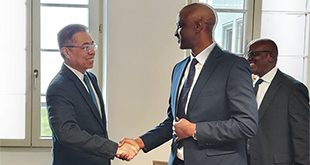
By Patrick Kagenda
The Eastern and Southern African Trade Development Bank (PTA Bank) announcement this month that it had raised Shs 8.5 billion of its Shs 40 billion corporate bond has focused fresh attention on Uganda’s capital market.
At the launch of the Shs 8.5 bond on the Uganda Securities Exchange (USE), Alex Gitari the PTA bank director for Finance said the success of the PTA bond is critical to the development of the Ugandan capital market and that there are potential development financial institutions and direct foreign investors (DFIs) waiting to see how it performs.
“Our success will be able to pull the other DFI`s to also come and issue similar instruments in this market which is good for the country and the region as a whole,” said Gitari.
The Shs 8.5 billion is barely 40% of the Shs 20 billion that the bank sought in the first tranche of the bond with a horse-shoe option to a maximum of another Shs 20 billion. Even then, it was raised after an extension from the October 2 launch debt to October 12.
The bond will be issued in tranches over a period of 12 months in a bid to raise the Shs 40 billion. This arrangement could also enable the offer to be periodically reviewed.
PTA Bank President Dr Micheal Gondwe said it would be returning to market for the remainder of the funds as soon as the first tranche is exhausted.
The PTA bond is the latest in a string of corporate bonds issued on the USE by Stanbic Bank, East African Development Bank, and Housing Finance Bank. They have a tenor of between 4 to 10 years. The PTA Bank is itself no stranger to the USE. Its maiden Shs 15 billion bond was successfully issued in 1999 and fully redeemed in 2004.
Fortunately for PTA bond, it is being launched a time when the USE equities turnover is showing signs of improvement. Corporate bonds similar to the PTA bond, which is mainly subscribed by institutional investors, have however rarely recorded any retail or secondary market activity. It’s is therefore not easy to assess how much, if any, interest there is in the PTA bond.
When Stanbic Bank offered its Shs 30 billion bond in August, it raised only Shs 26.6 billion in the first tranche although the bond was eventually fully subscribed. In comparison, when CFC Stanbic Bank of Kenya issued a bond double that size or US $64 million on the Nairobi Stock Exchange, it raised US$32 (Shs64 billion)in its first tranche.
As MTN’s precident-setting Shs 200 billion syndicated loan in October showed, bonds may be a cheaper option but loans could be a better option for raising big money quickly on Uganda’s shallow capital market.
Investors in bonds take a long-term outlook in assessing value and have their eyes glued on the movements in interest rates and inflation for the period. Whereas the former is a boon to the investor, the latter is a bane. Both remain high at the moment but with a lot of surrounding uncertainty. The other consideration is, of course the yield curve.
The PTA bond has a seven year tenor to amortise over five years after a two year grace period and a duo interest rate structure. Priced off the 91 days Treasury bill rate at 125 basis points for the floating component and the fixed rate component at 14%, its pricing appears attractive. The 91-day TBs were at a rate of 6.75% at the time of offer.
Secondly, a bond by the PTA Bank that has a solid capital base and brings together 19 countries of the regional Common Market for Eastern and Southern Africa (COMESA) with operations in London and New York should not be a hard sale.
The PTA bank is rated by Fitch the international rating agency as a BB- a rating that is higher than any of the banks sovereign share holders with the exception of China which also has shares in the bank. The Bank has also issued bonds worth US$25 million in Kenya, listed on the Nairobi Stock Exchange. The bank has also issued bonds in Tanzania, and Malawi and is planning to issue more in these and other member country markets inline with the growing demand for local currency financing.
The money will be applied to finance projects, and investments in Uganda with underlying local currency loans alleviating the exchange risks associated with the foreign currency lending.
To date the bank has lent out close to US$ 120 million to businesses in Uganda and has a project pipeline of more than US$ 60 million in the near future.
However the rate and stability of inflation in Uganda appears to be a major concern. Inflation has stayed double digit for about two years now after averaging about 5% for the previous two decades. The Bank of Uganda target is a lower inflation rate at about 5% but the reality is that it will remain double digit in the long-term.
The structure of the bond offer could also influence the investment decision. A fixed rate enables an investor to firmly establish the return on investment, while a floating rate could result in lower returns in case of a decline in interest rates.
Corporate bonds are also not as secure as government bonds. This added risk makes investors demand a higher rate of return.
 The Independent Uganda: You get the Truth we Pay the Price
The Independent Uganda: You get the Truth we Pay the Price


